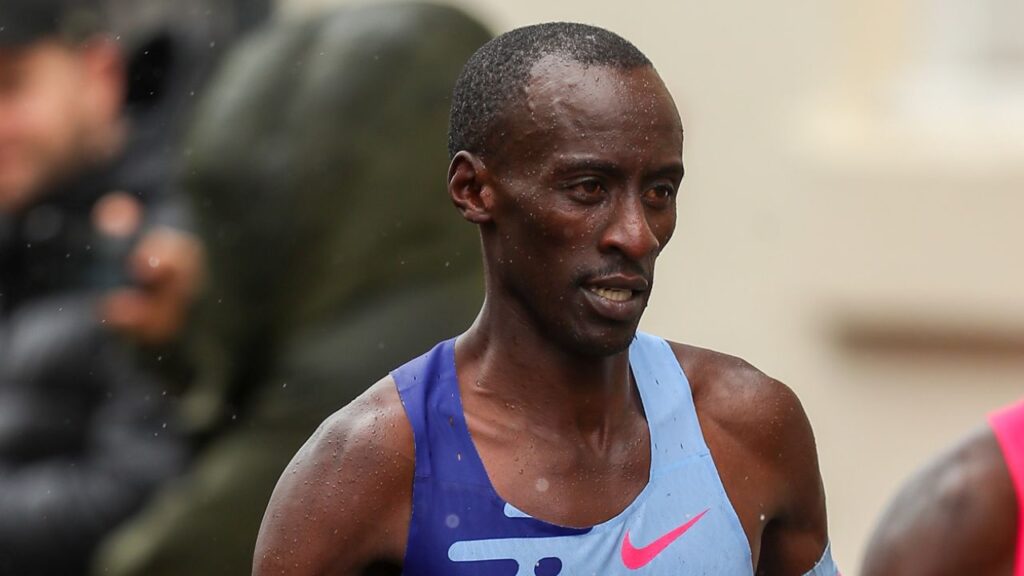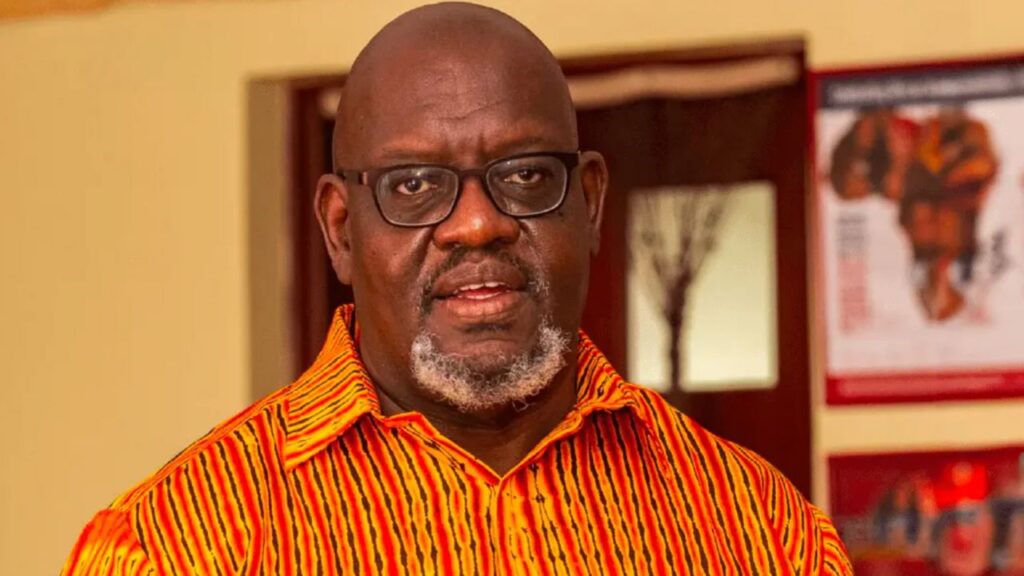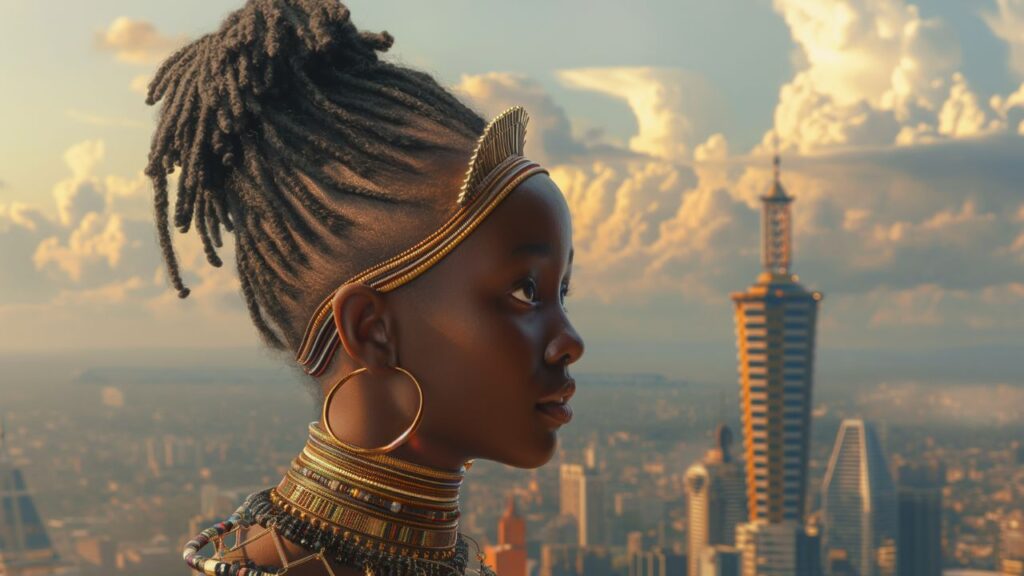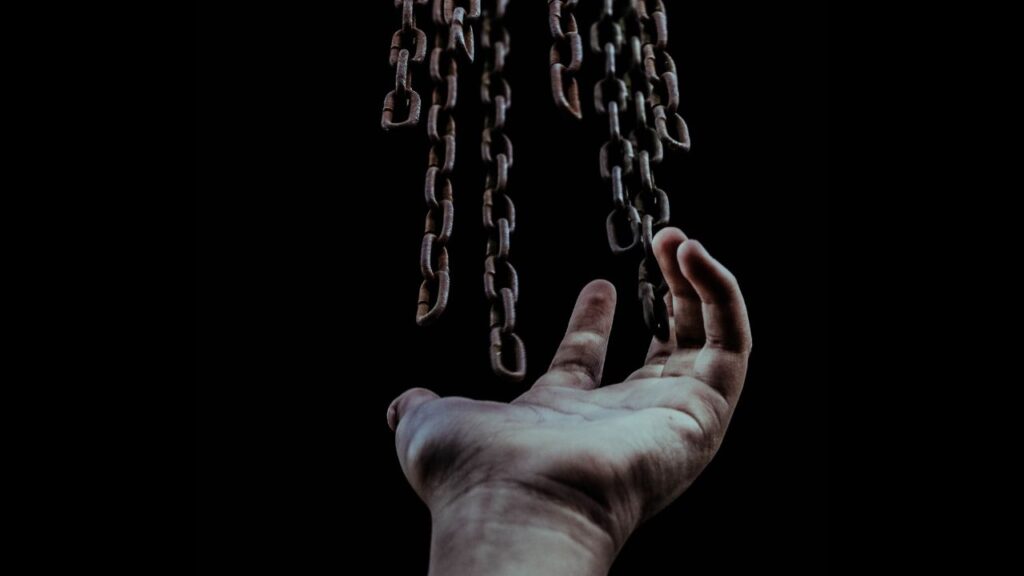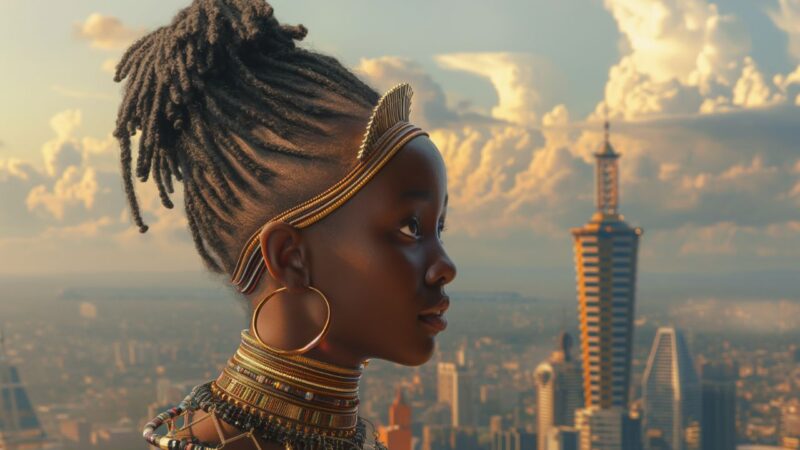A stuck story is like a baby who does not want to be born; keeping you in a long painful state of labour. Now I understand what Maya Angelou meant when she said, ‘There is no greater agony than bearing an untold story inside you.’
This is all I have.
My words, my stories. I sit with them in the mornings; I eat them for dinner. My nightmares are letters falling over me in torrents ready to swallow me. I rock in my chair afraid of them but they are all I have – I love them.
******
I started seeing the letters, ‘circa 1994’, when my Russian mother and Kenyan father had had a ferocious argument in our Nairobi home. My mother managed to tramp away.
She was always determined to walk away but she never really left. It was a habit. A couple of weeks later we would do it all over again.
Anyhow, as I cling to her, my father comes to the vehicle, a little yellow Volkswagen, and starts to pull me out. My mother wrestles to keep me in. Like a tug of war, I swung back and forth, to and fro; it did not even matter that it hurt me and I was wailing. They each needed to have their way. Which side I eventually landed on was no longer of essence. My spirit stayed haunted in between.
I clearly remember it was a sunny day and while I swung side to side the memory of the rays shifting with my movement as I helplessly gazed to the sky gave me hope. I love sunny days and this is a very important thing to note in this particular story.
Those who fought the fight feel the sting of history and justify why they have to protect a way of being. For me, it all seemed futile, for eventually they both died by 2003, when I thirteen. What was the point?
See, a few months after I was in Migori burying my father. They called me the mzungu child of Nyangi, the special one, named after his mother, Boke. I was a sweet girl the colour of honey, they said – and that’s what Boke meant – Honey. That was my identity.
But a few months later I was in Krasnodar, South of Russia, a new person in the thick of winter, burying my mother who had finally walked away from my dead father, for it was until death do us apart. Neither died peacefully. By extension neither could I live peacefully.
The only thing worse than regret is an untold story that didn’t die with the dead.
How did they die? The short version is they killed each other. The long version is my father’s kidneys failed and 5 years down the line he gave in. He was resilient I must say. He kept saying he was dying when struck with pain and nausea every few days. So every morning I would wake up to confirm. He was always still there. I called him the dying man who refused to die. It took 5 years! My mother – that is the difference between them – she wanted to live, she thought she would live- a faith born out of desperation. But the cancer ate her until there was barely anything left. Had I not known she was my mother all through, I would not have recognized her.
That is how my identity struggled: one side of it was dying but would not die, the other wanted to live but could not. Duality! Which identity wanted to live? Teenagers have lots of questions too and that’s what I started asking myself.
But this is what happened. A third dimension came in. My brother and I moved back to Kenya from the south of Russia.
Why? Because the stereotypical Russian enjoys his alcohol and my drunken uncle was becoming a nuisance (RIP to him too by the way). The fear of forgetting fights the fear of remembering. I remember the morning we woke up and dressed for school -my brother and I. We sat across each other on the small kitchen table. We stared at each other and communicated with our silence. We had no food. There was one small biscuit and about a third of a cup of milk. Being the elder one, I broke the biscuit into two halves and gave him the bigger one. We each took a few sips of the leftover milk and, still silently, went to school.
A missionary Catholic Church in Nairobi took us in by virtue of the long hours my mother of desperate faith spent in the chapel those last years. Looking back, I suppose a sense of kinship for a white woman struggling in an African country played a role. Aha! By then I was 14. I got accustomed to the way of the Catholic Church: balanced meals “Buon Appetitos”, proper use of cutlery, elbows on the table when you eat, modesty, hush hush tones, a short siesta in the weekend afternoon, church bells at vespers …
I joined school. Murmurs started at the Catholic school. Jokes in class about my poor Kiswahili grammar, “tumsamehe Katya,” the teacher said.
“Her father is a priest but it’s a secret,” went another.
They say that girls often shut out the noise by studying harder and hence do better in school when in adverse situations. That was me. “The Russian girl is not only pretty, she’s smart too,” they said.
I became an observer, watching the world around me disintegrate from my essence then come back together, like a runaway wounded dog limping back to what it once called home, hoping to be accepted again, here in Kenya. It hurt to leave. It hurt to come back. It hurt to do it over and over again, battling my inner demons – they too had questions. Why are you still here? Who are you? Who is your father? Does he art in heaven?
I became a collector of multi identities, a product of othering; Almost Kenyan, Quite Russian, Daughter of a priest, Poor Swahili, Good grades and graces.
But what next? Well, next was Lent, 2004; a time to solemnly confess our sins, practice self-denial and turn the focus on building our spiritual lives. Mass held profound messages during these 40 days as we prepared for Easter, the resurrection of our good Lord, Jesus, the saviour. I was not diligent about fasting as a form of self-denial so I instead pledged to always have my homework neatly and promptly done. It did build my spiritual serenity not to disappoint my teachers.
“Do not store up for yourselves treasures on earth, where moth and rust destroy, and where thieves break in and steal. But store up for yourselves treasures in heaven …,” read Father [Rafael] that Sunday.
His aging white face had lines of red capillaries showing through his translucent skin and his nose turned pink when he wanted to emphasise the sermon, staring into the congregation but looking at no one in particular. A momentary silence and then he closed by saying that our true riches were in heaven.
“The mass has ended, go in peace to serve and love the Lord,” closed padre.
I was bewildered by how humbled and fragile people became during mass. I mused at the experience of one woman. She was my sermon that day. I watched this woman, as she sat at the back – an impassive dark beauty. She robotically followed each ritual of the mass then left the church at the very instance of the close, a child tied to her back with a faded kanga and another whose hand she firmly held. She looked physically strong a hint of muscle in her arms. She also looked emotionally weary depicted by the ridges on her forehead and a nonchalant expression. Her pleasantly green apron dress was creased and a red scarf neatly wrapped her hair – she had put effort to make it to church and came looking the part. I wondered what more she could deny herself this Lent. I observed her as she hurriedly walked to the gate and disappeared round the corner as though she were an unwanted guest.
I wanted to run after her and ask her, ‘How do you do it? How do you find the strength to come here every distraught Sunday? How did you believe? Do you really believe?
I did not have the courage. I remained stiff, watching her fade away like a sunset, but faster.
I thought of how she stoically attended to her life that day. I thought of how her entire life, from our distance, was the virtue of self-denial. The church was the one place that ensured her of a waiting reward in heaven. Church was the one place where she could find glory in her poverty, find the sought assurance that the material world was just a passing horror; a test of our faith and the content and obedient will find favour.
I wondered: How far is heaven? Where is my faith? Where is my God? Why did I need to eat and drink the body and blood of Christ? Why did this woman have to give up wanting more for herself? Why did my life turn out this way? Was life just happening to me? Did I have a say in who I am?
And that was how by age 15, I ceased going to confession and the teenager in me overslept the morning mass, promising my caregivers that I would attend the evening one. I had one pending confession – I had lost my faith and with it my identity, long before this Lent.
…
As I had priests for fathers, I had access to a small library. I spent long hours in my extra time dissecting the ‘Who am I’ dilemma: Socrates, Aristotle, Epictetus the stoic, The African Bible. I read and I read and I wrote and I wrote – lost poems.
Lost because I feared someone would discover my deepest thoughts. I took my 300-paged notebook and soaked it in water- the one thing in my life that died a peaceful death.
Did I regret it? Yes. But remember what I said,
The only thing worse than regret is an untold story that didn’t die with the dead.
It was worse.
I could not sleep at night. I had dreams of my mother’s head and shoulders peeping through a cloud, wanting to live again. I smelt the varnish of coffins in my sleep and woke up in a cold sweat. I drenched my pillow with my deluge of tears. I dreamt of my father passing me in the streets of Nairobi as though as I was a stranger, only for us to look back at each other metres ahead. Never did I see them in the same dream. My mother’s spirit roamed the Ural Mountains and my father’s stood on the edge of gentle green hills of Isebania looking out to Tanzania, with his back to me.
My spirit lay haunted in between – 13,000 kms apart.
Socrates did not answer who I was. I went about the next decade complacently navigating life by the day, keeping to my few good friends who dared to see the insides of me and doing well in school. Books and words replaced my faith. Reading in the sun reminded me why I may have belonged here. That sun that gave me hope as I swung to and fro. That sun that set – I knew it would not leave me, it would return in the morning. That Kenyan sun.
In 2017, now 29, I sat in an Uber driving along the Southern Bypass as the driver initiated a conversation (probably for the sake of a good rating) on our infrastructure. He said, “Kenya is the best country if not for elections.” I consented and offered my usual “Indeed”. The amicable driver, perhaps in his early 40s then said, “Maybe a saviour will come, someone new and tribe-less accepted by everyone.” I never responded. I had long forgotten about religion and that kind of faith. I pondered on how likely it were. The last person of such vast influence was Jesus; no one was planning to replace him just yet.
Was I also waiting to be saved? I considered that perhaps he had a point – a new saviour! Was Jesus a redundant history over 80 percent of Kenya clang on to, the same way we cling onto failed families, failed identities and failed governments for lack of a divine alternative?
As he muttered on about our roads, my long-term relationship with his words conjured up a memory of Mzee Jomo Kenyatta talking about neo-colonialism in the idealistic days of the struggle, “I am amused by those who suggest that we cannot condemn something we have not seen or tasted.”
I reflected.
“Maybe we need to save ourselves,” I said, suddenly conscious, half-smiling, as I flipped through my social media feeds, scrutinising messages, careers, make-up and hair. The pressure to be a finished product was high. One had to be savvy, smart, beautiful, busy, in the gym at the some point (working out or taking selfies) and to claim an identity as a self-actualized individual. This god of image was becoming the alternative saviour.
…
When I was done with my errands that morning, my close friends and I headed out of town to escape the geopathic stress of the god of image who needed WiFi to thrive. We arrived at our destination when the sun was setting and the hills rolled on and on like sleeping giants guarding the tranquil Lake Naivasha. The Olerai trees glowed in the sunset light- everything was still and perfect; Kenya was perfect –the driver was right. The wide undisturbed landscapes still had a sense of longevity in them, lying in oblivion; tolerable because they were secluded, sans people – everyone was in Nairobi searching for their dream, having left behind the dream-like reality of the serene lake and the giants that would not wake any time soon.
How could God be anywhere else but here? How could I be anywhere else but here?
History causes hangovers. I was recovering from an inherited trauma. I remembered that sun as my parents pulled me to and fro. It was my hope. Here it was setting in front of me, and tomorrow I would see this sun of God again.
This is who I am.
This is where I rightfully belong.
This is my history.
This is my story.
…
“We are lost in the same song. We’re the same lost song”
Dust, Yvonne Adhiambo Owuor


